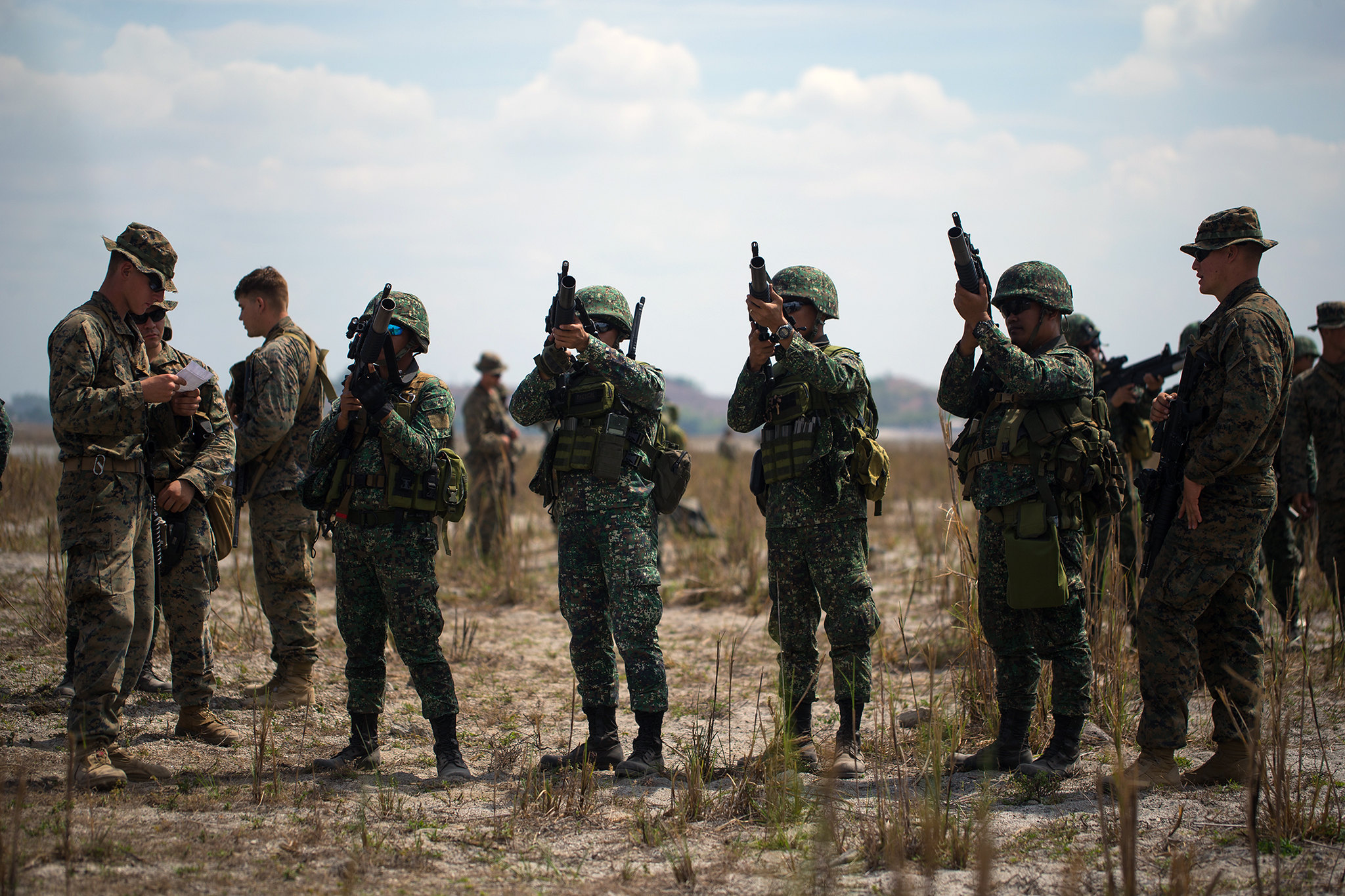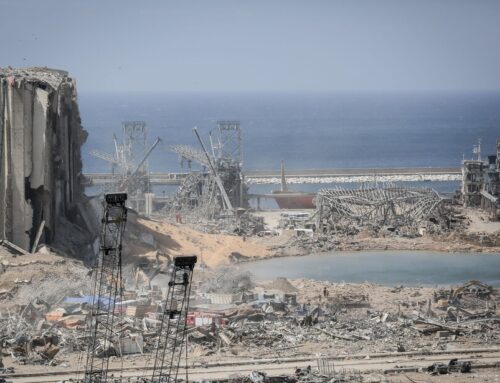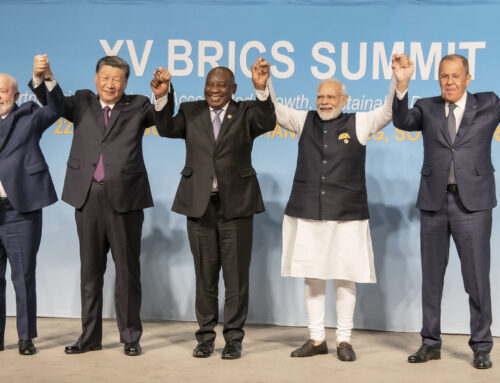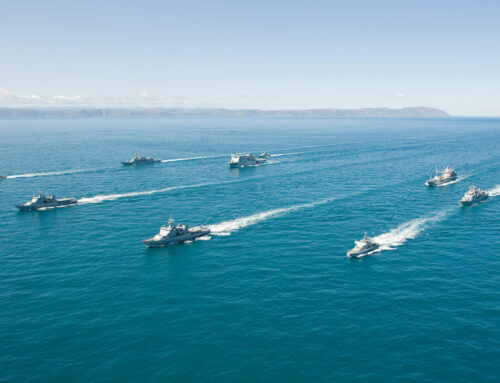Pulaski_Policy_Paper_No_17_2023 Philippines
Autor foto: Domena publiczna

Expansion of US military presence in the Philippines: a rebirth of an alliance
April 5, 2023
Author: Robert Czulda




Pulaski_Policy_Paper_No_17_2023 Philippines
Autor foto: Domena publiczna
Expansion of US military presence in the Philippines: a rebirth of an alliance
Author: Robert Czulda
Published: April 5, 2023
Pulaski Policy Paper no 17, April 05, 2023
The US’s expansion of its military presence in Southeast Asia is another step taken by the White House to strengthen its position vis-à-vis China in the Indo-Pacific. A decision of the Philippines to clearly take the American side is also noticeable.
At first glance, political and military relations between the United States and the Philippines seem unchanged and unwavering, as both countries have been connected by the Mutual Defense Treaty since 1951. However, in practice, bilateral relations have experienced many difficult moments, including in the 1990s when US military forces were requested to leave its facilities (US Naval Base Subic Bay and Clark Air Base, which were the largest overseas military facilities of the United States).
The Philippines has been a key country in the Indo-Pacific, as it plays a pivotal role in military plans of both the United States and China. The Philippines is a natural protective buffer – both for the Chinese against hostilities from the east and for the Americans, for whom the Philippines serves as a barrier separating China from their forces in the Pacific. The same is true from a perspective of Australia, which is separated from China – currently perceived by the authorities in Canberra as a key challenge – by, among other regional actors, the Philippines.
It is assumed that China’s military strategy in the event of a full-scale war is based on a concept of the „island chain” concept, which stretches from the Aleutians in the north to Borneo in the south. In the event of an armed conflict, the Philippines would be threatened with invasion by China, which would then try to move its defensive lines to the east. Both countries have overlapping territorial claims in the resource-rich South China Sea (known as the West Philippine Sea in the Philippines).
Bilateral security relations
The United States has never ceased to be an ally of the Philippines – the government in Manila has been supported in its fight against terrorist organisations (including jihadists). In the face of China’s growing expansion, an agreement covering a deployment of forces (VFA, Visiting Forces Agreement) was signed in 1998. Among other things, it opened a way for joint military exercises under the codename „Balikatan”. In 2014, the United States signed with the Philippines the Enhanced Defense Cooperation Agreement (EDCA), which covers combined training, exercises, and interoperability between military forces of both states. In March 2016, the Philippines and the United States agreed on five locations of military bases for the American troops under the EDCA: Antonio Bautista Air Base (Palawan), Basa Air Base (Pampanga), Fort Magsaysay (Nueva Ecija), Lumbia Air Base (Cagayan de Oro), and Benito Ebuen Air Base (Mactan, Cebu).
In reality, progress was slow due to a policy of President Duterte (2016-2022), who decided to improve bilateral relations with China. One of the first documents signed by Duterte and Chinese leader Xi Jinping was devoted to maritime cooperation. In 2017, he thanked „Chinese friends” for weapons donation.[1] In February 2020, the authorities in Manila decided to withdraw from the VFA, but ultimately did not implement it. The pro-China approach has failed. „Radio Free Asia” reported that „in 2021, the Philippines faced blowback from China as Manila repeatedly protested against the presence of hundreds of fishing boats believed to be manned by Chinese militias within Manila’s exclusive economic zone.”[2]
In 2019, first American installations (supply warehouse for rescue and humanitarian operations) on Luzon Island (Cesar Basa Air Base) were officially opened and plans for Palawan Island were confirmed. The latter is particularly important since it is located close to the South China Sea. It gives an access to Celebes and from there to the Pacific Ocean (another route leads to the north through the Luzon Strait, located between Taiwan and the Philippines). It would also be an ideal location for American surveillance systems , as well as for maritime patrol aircraft.
Recent developments
An important change occurred in June 2022, when Ferdinand Marcos Jr. became the President of the Philippines. During his presidential campaign, he promised to revive ties with the United States. In early February 2023, it was announced that the United States and the Philippines would “accelerate the full implementation of the Enhanced Defense Cooperation Agreement (EDCA).” [3] The United States, who have openly said that its “commitment to the defense of the Philippines is ironclad,”[4] will increase a number of their facilities (“Agreed Locations”) from five to nine. Additionally, the Americans will complete some expansion projects in the existing five Agreed Locations. New places most likely includes: Cagayan, Zambales, and Isabela (all on the Luzon island, facing north towards Taiwan), and Palawan. The Americans will not establish their own bases, but will utilize facilities “at agreed-upon Philippine military bases for the use of both countries.”[5]
Although the official announcement did not refer to China (it only mentioned “humanitarian and climate-related disasters in the Philippines, and respond to other shared challenges” [6]), there is no doubt that for the Americans, the main reason for their actions is China’s behavior. In recent years, China has expanded its military presence in other regions, including the South China Sea and the southern Pacific Ocean (this includes a military deal with the Solomon Islands in 2022). China’s response is not surprising – a spokesman for the Chinese Ministry of Foreign Affairs sees these actions as “an act that escalates tensions in the region and endangers regional peace and stability.”[7]
It is also worth noting that some Filipinos are unhappy with recent developments (it was public protests that led to the Philippine government demanding that US forces leave its bases in the early 1990s). According to media reports, after the announcement of the new agreement, protesters gathered outside the Philippine military headquarters, expressing concern that the move unnecessarily puts the Philippines between two superpowers at odds with each other.”[8]
However, it is difficult to accept China’s position as true – it is China, not the United States, that remains in a territorial dispute with countries in the region. It is China, not the United States, that Southeast Asian countries are concerned about. A decision made in February 2023 does not pose a threat, nor does it set a precedent – as mentioned at the beginning, Americans were already present in the Philippines. Moreover, there will be no significant increase in the US military presence, but rather both partner will improve cooperation and modernize local infrastructure.
Conclusions
- The US’s expansion of its military presence in the Philippines is another step taken by the White House to strengthen its position vis-à-vis China in the Indo-Pacific. The Philippines plays a pivotal role in military plans of both the US and China, as it serves as a natural protective buffer for both countries.
- Nevertheless, a decision from February 2023 to increase American engagement in the Philippines is not a violation of any agreement or a manifestation of hostility towards China – in the past, the American military presence in the Philippines was much greater – but at the same time, it is an event whose significance cannot be underestimated. It can be fairly seen as a rebirth of the alliance between these two countries. Moreover, it shows the unequivocal support of the Philippines – in recent years trying to normalise its difficult relations with China – for the United States.
- It can be predicted that Manila will pursue a pro-American policy as long as Marcos Junior is president. This may have a positive impact on a technological modernisation of the Philippine armed forces, which has been hindered by financial constraints. Further steps can be expected, for example, the joint statement promised to increase bilateral dialogue, including in the maritime domain. However, one should not expect a sudden increase in the number of American soldiers. In a current international situation, it is highly unlikely that their numbers will reach levels of the Cold War era. New bases will primarily serve for the pre-positioning of military supplies and equipment.
- From the perspective of the United States, it is important that a decision made in February 2023 gives the White House an opportunity to both strengthen and expand its presence and influence in Southeast Asia. Moreover, this deal may increase a courage of other sub-regional countries. At the same time, a risk of expansionist Chinese activity inside the Philippines decreases, although this does not mean that Filipino security issues – not only internal, but also in relation to China (territorial disputes) – disappear.
- Enhanced cooperation between the United States and the Philippines also indirectly affects a security of Taiwan (Republic of China), which is a victim of Beijing’s increasingly aggressive policy of encirclement and intimidation. A distance between Taiwan and the Philippines is about 190 kilometres. It is a reasonable hypothesis that a greater US presence in this part of Asia can also can act as a deterrent to China. In other words, an enhanced US presence could decrease China’s readiness to take any hostile actions against Taiwan. Furthermore, a proximity of US-controlled pre-positioned materiel sites could be crucial if China decides to launch any provocation against Taipei.
Author: Robert Czulda, Resident Fellow, Casimir Pulaski Foundation
Supported by a grant from the Open Society Initiative for Europe within the Open Society Foundations

[1] „Duterte thanks ‘good friend’ China as it donates weapons for Philippine Islamist fight”, South China Morning Post, June 29, 2017, www.scmp.com/news/asia/southeast-asia/article/2100504/duterte-thanks-good-friend-china-it-donates-weapons.
[2] „Philippines signs $554M deal for 2 South Korean-made warships”, Radio Free Asia, December 28, 2021, www.rfa.org/english/news/china/deal-12282021150235.html.
[3] „Philippines, U.S. Announce Four New EDCA Sites”, US Department of Defense, February 1, 2023, www.defense.gov/News/Releases/Release/Article/3285566/philippines-us-announce-four-new-edca-sites.
[4] Ashley Westerman, „The U.S. and the Philippines agree to a larger American military presence”, NPR, February 2, 2023, www.npr.org/2023/02/02/1153727888/the-us-philippines-american-military-presence.
[5] Gregory B. Poling, „The Transformation of the U.S.-Philippines Alliance”, Center for Strategic & International Studies, February 2, 2023, www.csis.org/analysis/transformation-us-philippines-alliance.
[6] “Philippines, U.S. Announce Four New EDCA Sites”, US Department of Defense, February 1, 2023, www.defense.gov/News/Releases/Release/Article/3285566/philippines-us-announce-four-new-edca-sites.
[7] Ashley Westerman, „The U.S. and the Philippines agree to a larger American military presence”, NPR, February 2, 2023, www.npr.org/2023/02/02/1153727888/the-us-philippines-american-military-presence.
[8] Sanya Mansoor and Simmone Shah, “Why the Philippines Is Letting the U.S. Expand Its Military Footprint in the Country Again”, Time, February 3, 2023, https://time.com/6252750/philippines-us-military-agreement-china.





